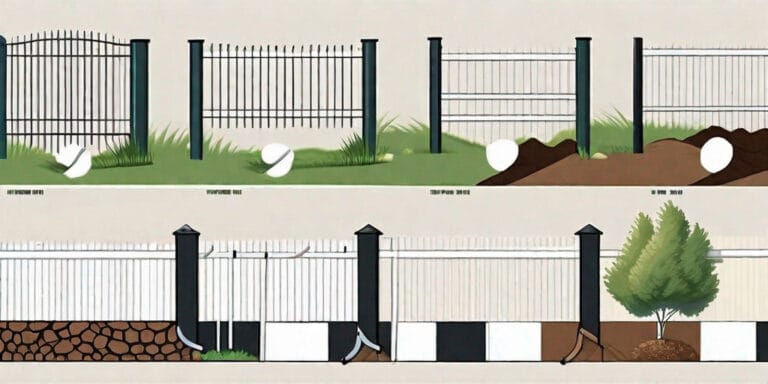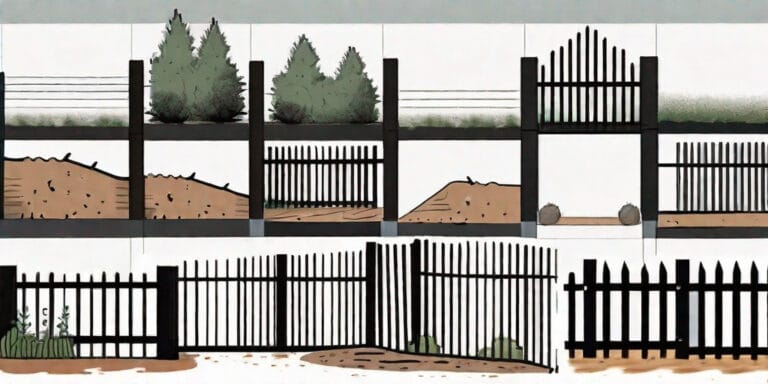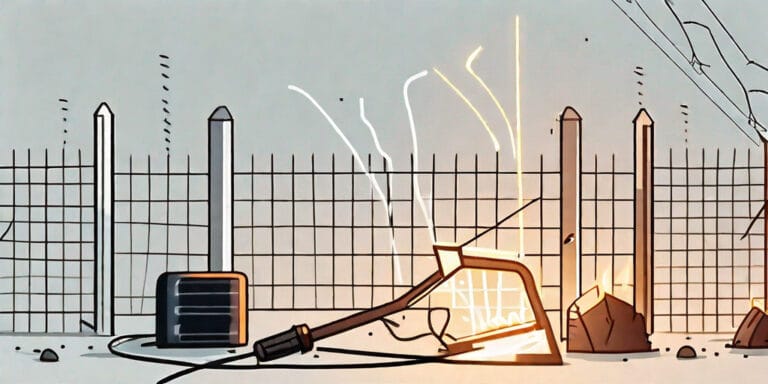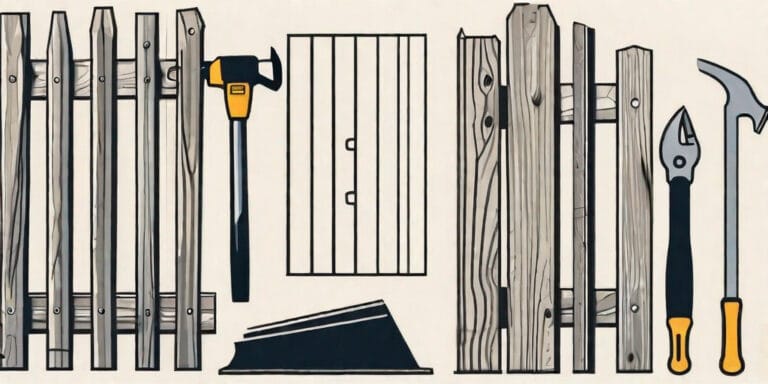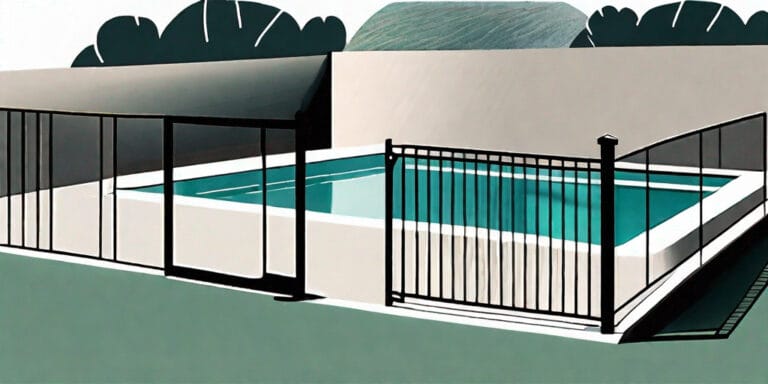How to Install an Aluminum Fence
Installing an aluminum fence is an excellent way to enhance the security and aesthetics of your property. Whether you want to keep pets and children safely contained or add a touch of elegance to your yard, aluminum fencing is a durable and low-maintenance option. In this guide, we will walk you through the step-by-step process of installing an aluminum fence, from understanding the basics to attaching the fence panels securely.
Understanding the Basics of Aluminum Fencing
Before diving into the installation process, it’s essential to grasp the benefits of aluminum fencing. Aluminum fences are known for their durability, rust resistance, and versatility. Unlike traditional wood or iron fences, aluminum fences require minimal maintenance and can withstand various weather conditions.
Aluminum fencing is a popular choice among homeowners and businesses alike due to its numerous advantages. Let’s take a closer look at some of the key benefits:
Benefits of Aluminum Fencing
One of the main advantages of aluminum fencing is its durability. Aluminum is a lightweight yet sturdy material that can withstand the test of time. It is highly resistant to corrosion and does not rust, making it an ideal choice for outdoor installations. Whether you live in a coastal area with high humidity or an area prone to heavy rain, an aluminum fence will remain in excellent condition.
Another benefit of aluminum fencing is its versatility. With a wide range of styles and colors available, you can choose an aluminum fence that complements your property’s aesthetic appeal. Whether you prefer a classic picket fence or a more modern and sleek design, there is an aluminum fence style to suit your taste.
Furthermore, aluminum fences are low maintenance. Unlike wood fences that require regular staining or painting, aluminum fences only need occasional cleaning to keep them looking their best. This saves you time and money in the long run, as you won’t have to invest in costly maintenance or repairs.
Types of Aluminum Fences
There are several types of aluminum fences to suit different needs and preferences. Let’s explore some popular options:
Picket fences are a timeless choice for many homeowners. They feature spaced vertical bars, providing an open and inviting feel to your property. Picket fences are perfect for defining boundaries without creating a sense of isolation.
Privacy fences, on the other hand, offer increased privacy and security. These fences have minimal spacing between the bars, ensuring that prying eyes cannot easily see into your property. Privacy fences are an excellent choice for those who value their privacy and want to create a secluded outdoor space.
If you’re looking to add a touch of elegance to your property, ornamental fences are the way to go. These fences are designed with decorative elements such as scrolls, finials, or intricate patterns. Ornamental fences not only provide security but also enhance the overall visual appeal of your property.
Necessary Tools and Materials for Installation
Before beginning the installation process, it’s important to gather all the necessary tools and materials. Here’s a list of what you’ll need:
- Tape measure: To accurately measure the dimensions of your property and plan the fence layout.
- Level: To ensure that the fence is straight and properly aligned.
- Post hole digger: To dig the holes for the fence posts.
- Concrete mix: To secure the fence posts in the ground and provide stability.
- Screws: To attach the fence panels to the posts securely.
- Brackets: To reinforce the connection between the fence panels and posts.
- Fence panels: The main component of the fence that provides security and defines the overall look.
When selecting the tools and materials, it’s crucial to choose high-quality options. Investing in durable materials will ensure that your aluminum fence install stands strong against the test of time and various weather conditions.
Now that you have a better understanding of the benefits of aluminum fencing and the different types available, you’re ready to embark on your installation journey. Remember to take your time, follow the instructions carefully, and enjoy the process of enhancing your property with a beautiful and functional aluminum fence.
Pre-Installation Steps
Proper planning and preparation are crucial for a successful fence installation. Take the following steps to ensure a smooth process.
Choosing the Right Fence for Your Property
Determine the purpose of your fence and select the appropriate style. Consider factors such as security, aesthetics, and any local regulations or homeowners’ association guidelines.
When choosing the right fence for your property, it’s important to consider the overall look and feel you want to achieve. Are you looking for a fence that provides privacy, or do you prefer a more open design? Think about the architectural style of your home and how the fence will complement it. Additionally, consider the maintenance requirements of different fence materials. Some materials, like vinyl or aluminum, require minimal upkeep, while others, like wood, may need regular staining or painting.
Another important factor to consider is the level of security you need. If security is a top priority, you may want to choose a fence with features like a locking gate or sturdy materials that are difficult to climb. On the other hand, if aesthetics are more important to you, you can opt for a fence that adds visual appeal to your property without compromising on security.
Before finalizing your decision, it’s also essential to check any local regulations or homeowners’ association guidelines that may dictate the type of fence you can install. Some neighborhoods have specific rules regarding fence height, material, and design. Make sure to familiarize yourself with these regulations to avoid any potential issues down the line.
Measuring Your Yard for Fence Installation
Accurate measurements are essential to ensure you purchase the correct amount of materials. Use a tape measure to determine the length of the fence line and mark any required angles or corners.
When measuring your yard for fence installation, it’s important to be precise. Start by measuring the perimeter of your property to determine the length of the fence line. Take into account any angles or corners that may affect the layout of the fence. It’s a good idea to use a tape measure and mark the measurements directly on the ground to visualize the fence line accurately.
Additionally, consider the terrain of your yard. If your property has slopes or uneven areas, you may need to adjust the height of the fence or make accommodations for the ground’s contours. Taking accurate measurements will help you determine the amount of fencing material you’ll need, including posts, panels, and any additional components.
Marking the Fence Line and Post Positions
Use stakes and string to mark the fence line, ensuring it follows the property boundaries. Additionally, mark the positions where the fence posts will be installed, keeping them evenly spaced for proper stability.
Once you have determined the fence line and measured your yard, it’s time to mark the exact positions where the fence will be installed. Start by placing stakes at the corners of your property and tying string tightly between them to create a straight line. This will serve as a guide for the fence installation.
Next, mark the positions where the fence posts will be installed. It’s important to keep the posts evenly spaced for proper stability. Typically, fence posts are placed every 6 to 8 feet along the fence line, but this may vary depending on the type of fence and local regulations. Use a measuring tape and mark the spots where the posts will go, ensuring they align with the string marking the fence line.
By accurately marking the fence line and post positions, you’ll have a clear visual guide for the installation process. This will help ensure that the fence is installed straight and in the correct location, resulting in a professional and aesthetically pleasing outcome.
Installing the Aluminum Fence Posts
Now that you have completed the necessary pre-installation steps, it’s time to install the fence posts, which provide the foundation for the entire fence.
Digging the Post Holes
Using a post hole digger, dig holes at each marked position. The depth and diameter of the holes will depend on the height and width of your fence. It’s generally recommended to dig holes that are one-third the height of the fence.
Setting the Fence Posts
Place the fence posts into the holes and fill them with concrete mix. Ensure that the posts are level and aligned correctly using a level and string. Allow the concrete to set according to the manufacturer’s instructions before proceeding.
Ensuring Posts are Level and Aligned
After the concrete is fully set, double-check that the posts are level and aligned correctly. This step is crucial as it ensures the stability and aesthetic appeal of the fence.
Attaching the Aluminum Fence Panels
With the fence posts securely in place, you are now ready to attach the aluminum fence panels. This step brings your fence to life, adding both functionality and beauty to your property.
Aligning the Fence Panels
Start by positioning the first fence panel between the two end posts. Ensure that it is level and aligned properly. Use brackets and screws to attach the panel securely to the posts. Then, continue attaching the remaining panels, maintaining consistent spacing between them.
Securing the Panels to the Posts
Once all the panels are in place, check that they are firmly attached to the fence posts. Tighten any loose screws and make any necessary adjustments to achieve a cohesive and structurally sound fence.
Now that you have completed the installation process, step back and admire your newly installed aluminum fence. Not only does it provide security and functionality, but it also enhances the overall aesthetic appeal of your property. Remember to perform routine maintenance to keep your fence looking its best for years to come. With proper care, an aluminum fence can withstand the test of time while adding value to your home.


